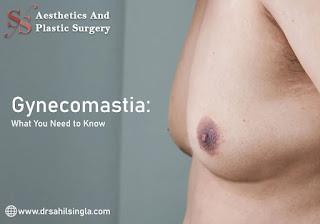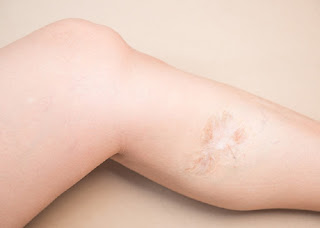Gynecomastia: What You Need to Know
Gynecomastia is the condition of overgrowth of the male mammary gland, which leads to a deposit of fat under the nipple. Data from the WHO (World Health Organization) indicate that it affects up to 40% of men.
This condition can be a consequence of the enlargement of
the glands, the concentration of fat or both. Gynecomastia is always
related to an imbalance in the production of testosterone, which is the hormone
responsible for male characteristics and for the production of estrogen, more
related to female characteristics such as breast growth, explains the Best
Plastic Surgeon in Delhi.
Understand the problem:
According to the Plastic Surgeon in Delhi, Gynecomastia
can happen in adolescents between 13 and 14 years old and present regression at
17, even so, a medical evaluation is recommended.
The growth of breasts in boys takes up to 6 months, and this
process can result in an abnormal enlargement of the glands, which then tend to
return to normal measurements. But there are estimates that show that in
up to 5% of cases, this growth, called hypertrophy, can remain until adulthood.
Gynecomastia can also affect men who are obese, because the
fat tissue also produces enzymes that can convert testosterone precursors to
estrogens.
Men over 70 years old can also have gynecomastia and with a
simple physical examination it can be seen the abnormal growth of both or in
one breast.
The medical evaluation aims to identify the degree of
gynecomastia:
- Grade
1: breasts appear swollen and areolas prominent. Just the fact of
wearing more fitting clothes can cause discomfort at this stage.
- Grade
2: the breast tissue presents an increase that goes beyond the areolar
region.
- Grade
3: breasts are large and drooping. Patients report extreme
discomfort, being difficult to disguise their appearance and possibly
causing more severe psychological problems
What are the consequences?
The main aspect to be evaluated is the psychic implications
and the cause of the problem. Specialists who can be consulted are general
practitioners, Plastic Surgeon in Jammu or
endocrinologists. Treatments should always be indicated by the doctor and
may involve hormone therapy or plastic surgery.
In general, this condition does not affect the body's
functioning, so in addition to asymmetric growth, in some cases, it can occur:
- increased
sensitivity or pain
- itch
- asymmetrically
shaped areola
- secretions
(which are warning signs!) that may be associated with disease
The main recommendation is to see the Best Plastic Surgeon in Jammu.
Male breast enlargement can be embarrassing and embarrassing
for teenagers and can seriously affect sexual behaviour in adult men.
The Plastic Surgeon in Jammu removes
the gland and reconstructs the shape, preventing the tissue from growing
back. The incision is always discreet and strategically planned according
to the amount of skin to be removed. Scars tend to be barely noticeable
over time. The most common surgical strategy is a half-moon cut around the
nipple, with the opening facing upwards.
The surgical procedure is performed under local anaesthesia
and sedation. In general, the patient is discharged on the same day.
Post operative care
The postoperative care recommended by the Plastic
Surgeon in Jammu must be
followed, especially in the presence of drains, commonly used in this type of Male Breast Reduction Surgery in Delhi.
Compliance with drug therapy is also an extremely important
item for recovery.
The patient must also wear a vest for up to 45 days,
following the scheduled follow-up by your plastic
surgeon in Delhi, who monitors the healing process at scheduled appointments.
The return to physical exercise and care with daily
activities are also guided by the medical team and all doubts should be taken
out in the office.


Comments
Post a Comment